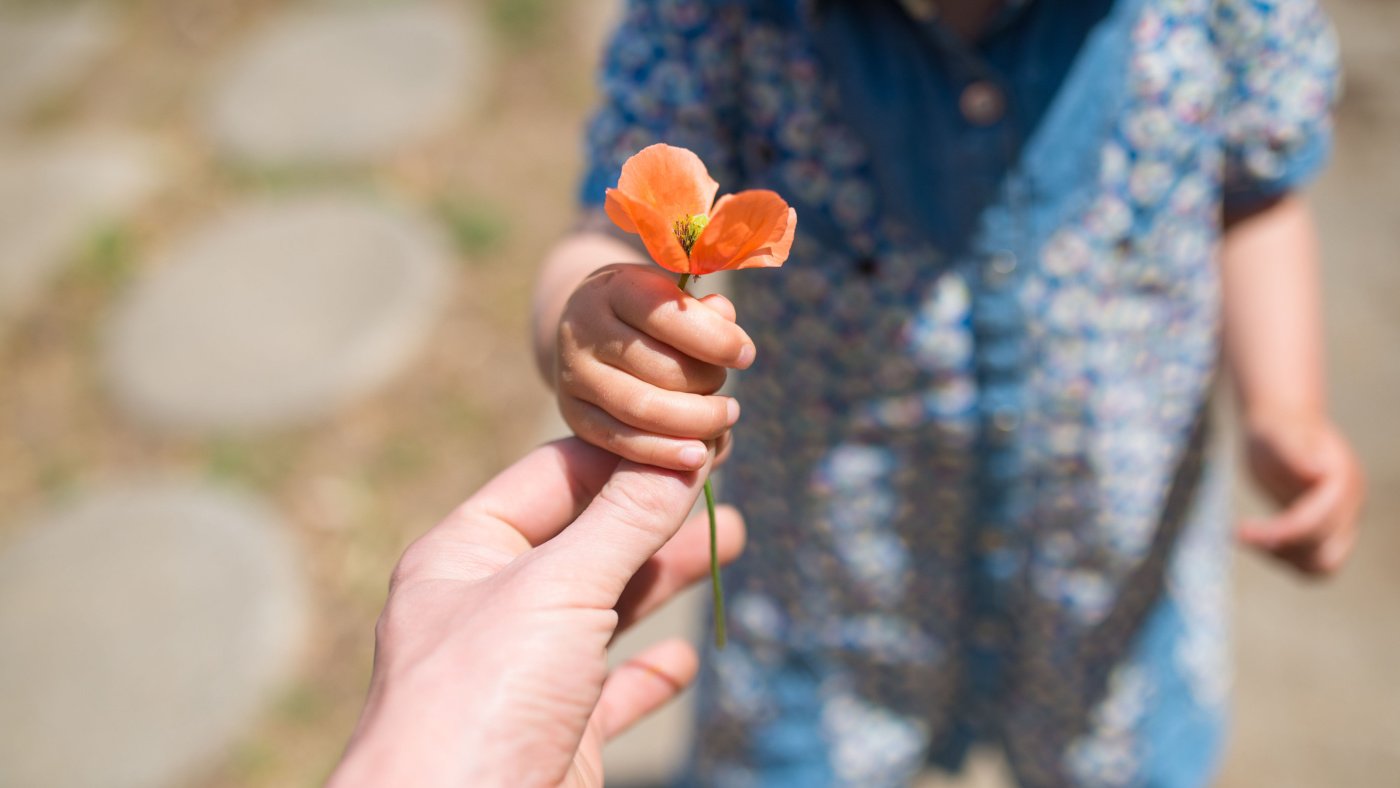Spreading the love – random acts of kindness and children

There’s lots of love around this week with Galentine’s Day, Valentine’s Day and Random Acts of Kindness Day. In keeping with the theme of showing love and kindness, we’ve been thinking about children and kindness.
When you think about it, small acts of kindness from children are a big deal. When they give you a daisy or draw you a picture, they are giving you something they really treasure, and that is a huge gift.
Not only is being kind a wonderful thing to do for others, but it also improves our own sense of well-being1 and reduces stress.2
Empathy
Before your child can understand how other people feel, they need to understand their own emotions, and know that other people have different thoughts, feelings and ideas. But empathy doesn’t develop overnight! It’s complicated and takes time. It’s not innate but learned, so parents can help their children learn to be empathetic.
Empathy is more than just knowing how someone feels – it’s also understanding their emotions from their point of view
Empathy involves your child recognising a feeling or emotion in someone else that they have felt before. They don’t need to have shared the experience but need to understand the feeling. They will feel a common bond with the range of feelings of an experience or situation that might provoke these emotions.
To take another person’s perspective, your child needs to have had a range of emotional experiences themselves
Even after they have this reference point, it will take time and experience for your child to understand how this might translate for other people, and then to understand how to use that knowledge to connect with someone.
Ways you can support your child’s developing empathy
When you recognise and name your child’s emotions you help them to understand how they feel. You don’t always need to make them feel better, as much as you might like to. There will be times when they’re sad, angry or frustrated, and you can’t change that.
When you try to understand your child’s point of view (even if, from your adult perspective, it seems unreasonable), you show them how empathy works.
This doesn’t mean you have to join them in tears and shouts when they just want a different cup (tempting though it may be, we’ve all had those days), but that you acknowledge that to them, in that moment, that cup (or whatever it may be) is important, and you understand that they feel sad.
Helping your child to be kind
There are so many ways children can be kind and experience the benefits of how they feel when they show kindness to someone.
Toddlers and pre-schoolers could draw a picture for someone, pick some flowers (tiny eggs cups of daisies are so joyful!), or even offer some treasure, such as leaves they’ve collected on a walk. They might make you a make-believe cup of tea or give you a cuddle.
We can help them learn how to be kind by following our example, such as taking the time to talk to shop-workers and waiters, talking to neighbours and checking their friends are ok if they take a tumble.
You could talk about kindness together, think about questions like “What does it mean to be kind?” and “Can you think of some ways you could show kindness?”
You can share books about kindness together. I Walk with Vanessa: A Story about a Simple Act of Kindness by Kerascoët is wordless picture book that’s perfect for teaching children about kindness and helping other people. It tackles the difficult topic of bullying, yet the resounding message that kindness is king shines through. There are some hints and tips at the back of the book for parents and children on how to help someone who is being bullied and how a small act of kindness can really make a difference.
We also love Last Stop on Market Street, written by Matt de la Peña and illustrated by Christian Robinson, which follows CJ and his grandmother as they catch the bus after church. Exploring themes of kindness and inclusion, this wonderful book focuses on appreciating riches that can’t be bought and reminds us that kindness and community are more important than wealth.
It’s important that children understand there’s a difference between being kind and being nice. Being nice is doing what is expected to please others, where kindness is showing empathy and being willing to stand up for what is right.
Kindness and empathy in young children are big topics, and there are so many ways in which we as parents can help our children to develop empathy. If you’re interested in finding out more, why not try the My First Five Years app? It’s packed with information about your child’s social and emotional development, in addition to five further streams of child development and thousands of activities tailored to your child. Find the app here.
1 Rewards of kindness? A meta-analysis of the link between prosociality and well-being by Hui, Bryant P. H., Ng, Jacky C. K., Berzaghi, Erica, Cunningham-Amos, Lauren A., Kogan, Aleksandr https://psycnet.apa.org/record/2020-65092-001
2 Kindness as a Stress Reduction–Health Promotion Intervention: A Review of the Psychobiology of Caring by David A. Fryburg https://www.ncbi.nlm.nih.gov/pmc/articles/PMC8848115/